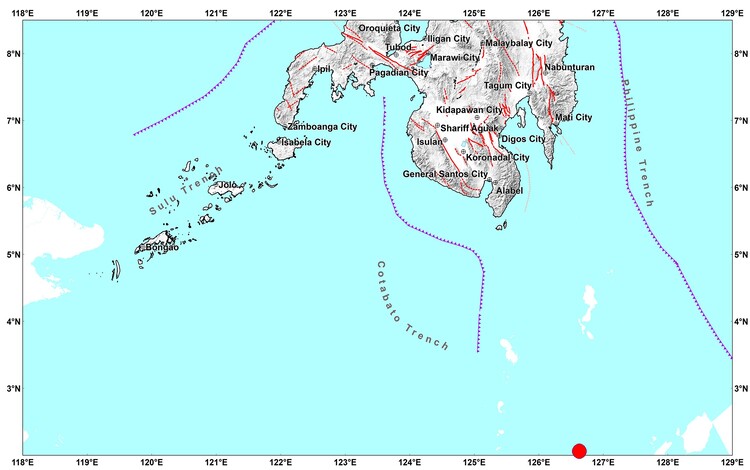On April 13, 2024, at 02:26 PM local time, an earthquake struck Balut Island, located in the Davao Occidental province of the Philippines. The seismic event recorded a magnitude of 5.3 on the Richter scale, occurring at a depth of 74 kilometers. The precise coordinates of the earthquake’s epicenter were 02.05°N latitude and 126.56°E longitude, approximately 393 kilometers south and 19° east of Balut Island.

While a magnitude of 5.3 falls within the range classified as moderate, the effects of earthquakes can vary significantly based on factors such as depth, proximity to populated areas, and local geological conditions. Despite the moderate magnitude, it’s important to remain vigilant and take necessary precautions in the aftermath of seismic activity.
Balut Island, situated in the southern region of the Philippines, is known for its natural beauty and marine biodiversity. The island, like many areas in the Pacific Ring of Fire, is susceptible to seismic events due to the complex tectonic activity in the region. The Pacific Ring of Fire is characterized by a series of tectonic plate boundaries, making it one of the most seismically active areas on Earth.
The occurrence of earthquakes in such regions underscores the importance of preparedness and resilience in the face of natural disasters. Local authorities, as well as residents in earthquake-prone areas, should have robust emergency plans in place to mitigate the potential impact of seismic events. These plans may include strategies for evacuation, communication, and provision of emergency supplies.
Following the earthquake, individuals in affected areas should remain cautious and aware of potential aftershocks, which can occur in the hours, days, or even weeks following the initial seismic activity. Aftershocks, though usually weaker than the main shock, can still cause damage to weakened structures and pose safety risks.
Furthermore, seismic events serve as reminders of the importance of building infrastructure that is resilient to earthquakes. Structural engineers and urban planners play a crucial role in designing buildings and infrastructure that can withstand the forces exerted by seismic activity, thereby reducing the risk of casualties and damage.
In conclusion, while the earthquake that occurred in Balut Island registered a magnitude of 5.3, it serves as a reminder of the ongoing seismic activity in earthquake-prone regions such as the Philippines. Preparedness, resilience, and adherence to building codes and safety standards are essential in mitigating the impact of such natural disaster
